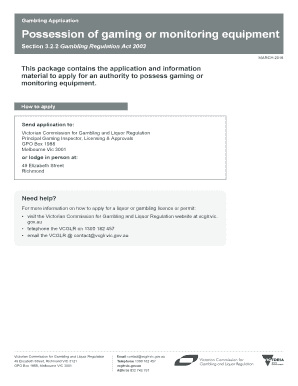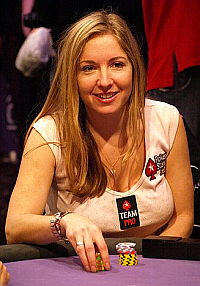Gambling Legislation Victoria

Gambling advertising has increased rapidly over the past decade.
While smartphones, apps and social media have multiplied the marketing possibilities, a High Court decision in 2008 also played a major part in the dramatic increase in gambling advertising.
The effect of the ruling was to allow bookmakers to offer bets anywhere in Australia. The ruling also made it clear that states and territories were unlikely to be permitted to ban advertising from other parts of the country. The states and territories with bans, including Victoria, amended their legislation to remove them. The High Court case and subsequent ban removal resulted in a significant rise in the number of gambling companies operating across Australia, and a highly competitive market.
According to Nielsen Media Research, the gambling industry spent $273.2 million on advertising in Australia in 2018, up from $89.7 million in 2011. This excludes sponsorships and in-program content, such as during live sport broadcasts.
In September 2017, the Victorian Government announced a ban on betting advertising on roads and public transport, and within 150 metres of public schools. The laws apply to all static advertising, including on billboards and infrastructure like stations and bridges.
The Australian Capital Territory covers just under a half-million residents. Its gambling offerings include Casino Canberra, which opened in 1994. There are nearly 5,000 pokies in the region, ok’d by the Gaming Machine Act of 2004. The machines are in hotels, clubs, and taverns with limits. The proposed amendments are set out in the Gambling Regulation Amendment (Gaming Machine Arrangements) Bill 2017, which can be accessed at legislation.vic.gov.au (External link) As it cannot bind the Parliament of Victoria, the State of Victoria gives no warranty that the proposed amendments will be passed by the Parliament. The Victorian Parliament has passed legislation that amends the Gambling Regulation Act 2003 (the Act). The amending legislation includes: Gambling Regulation Amendment (Gaming Machine Arrangements) Act 2017 (GMA Act) passed on 30 November 2017 Gambling Legislation Amendment Act 2018 (GLA Act) passed on 6 March 2018. On 30 November 2017 and 6 March 2018, the Victorian Parliament passed the Gambling Regulation Amendment (Gaming Machine Arrangements) Act 2017 (GMA Act) and the Gambling Legislation Amendment Act 2018 (GLA Act) respectively. These Acts amend the Gambling Regulation Act 2003 (the Act) which mean a number of changes for gaming venue operators. A Change in Victoria’s Gambling Laws Is Being Pushed. As we mentioned earlier, Australia’s territories can set their own laws regarding gambling. Victoria has only granted one company a license to offer land-based wagers. That company, named Tabcorp, is earning millions in revenue every year.
Mass media pokies advertising is also banned in Victoria. However, there is rising community concern about the proliferation of sports betting advertising on broadcast and digital media, particularly its effect on young people. Research findings substantiate this concern.
A Foundation-funded study – Extent of, and children and young people’s exposure to, gambling advertising in sport and non-sport TV – found that in 2016, there was an average of 374 gambling ads a day on Australian free-to-air TV. Two-thirds of these occurred between 6 am and 8:29 pm, when large numbers of young people were watching. There were around four times as many gambling ads an hour in sports programming than in non-sports programming.
374
gambling ads a day on Australian free-to-air TV in 2016.
Download image version of the infographic ' 374gambling ads a day on Australian free-to-air TV in 2016.
Gambling Legislation Victoria Canada
'
x 4
Four times as many gambling ads an hour on free-to-air sports TV than on non-sports TV in 2016.
Gambling Act Victoria
Download image version of the infographic ' x 4Four times as many gambling ads an hour on free-to-air sports TV than on non-sports TV in 2016.
'In Australia, ads for betting products are not permitted during TV programs classified G or lower from 6 to 8.30 am and 4 to 7 pm, or in programs directed at children between 5 am and 8.30 pm. Until 2018, these restrictions excluded sport broadcasts. On 30 March 2018, bans on gambling ads during broadcasts of live sport were introduced between 5 am and 8.30 pm. See the Australian Communications and Media Authority website for more: New gambling ad rules introduced.
On 28 September 2018, new complementary rules were also implemented to restrict gambling advertising during online streaming of live sport between 5 am and 8.30 pm.
The 2016 Foundation-funded study Child and parent recall of gambling sponsorship in Australian sport collected data from children and parents at community sporting venues in New South Wales and Victoria. Three-quarters of 8- to 16-year-olds interviewed could name at least one gambling brand, and one-quarter could name four or more.
Online Gambling Legislation
The children interviewed also perceived that some forms of marketing were more influential than others, in particular, advertisements featuring celebrities. Funny videos that are not easily recognisable as advertising can also have a strong impact on children.

Another 2016 study reported that 75 per cent of 8- to 16-year-olds thought gambling was a normal or common part of sport. For more on this study, see ‘It's just everywhere!’ Children and parents discuss the marketing of sports wagering in Australia.
1 in 4
* Based on interviews with 152 children aged 8–16 attending community sporting venues
Download image version of the infographic ' 1 in 4 '31 %
of Victorian secondary school students have gambled.
Download image version of the infographic ' 31 %of Victorian secondary school students have gambled.
'Participants in the 2016 studies were able to describe incentives offered by bookmakers, such as ‘bonus bet’ offers and ‘cash back’ deals, which likely contributed to their belief that you could not lose from gambling. This perception is not limited to young people. Incentives or inducements are a form of marketing used to attract new customers or to trigger further gambling. There is also evidence they can lead to people underestimating the risks they are taking.
A 2018 study funded by the Foundation investigated the effects of wagering marketing on vulnerable adults and found that many vulnerable bettors were heavily exposed to wagering marketing, which led them to place bigger and more frequent bets.
A follow-up study looking at direct texts and emails sent by wagering operators found this direct messaging to be extremely frequent and likely to contribute to risky gambling.
In 2019, the Foundation released research exploring gambling attitudes, behaviour and exposure among Victorian secondary school students, which found 31 per cent had gambled at some point in their lives, and six per cent had gambled in the previous 30 days. Just under three-quarters of all students had been aware of gambling advertisements or promotions on TV in the past month. This exposure was linked to increased likelihood of gambling.
Our Love the Game Sporting Club Program works with local and elite sporting clubs to reduce young people's exposure to sports betting advertising and counter the social norm of gambling in sport.
See some of our sporting hero partners talk about loving the game, not the odds:
Our School Education Program supports secondary school communities to help young people develop informed attitudes to gambling.

Find out more about our work to address the normalisation of gambling at Love the game, not the odds.